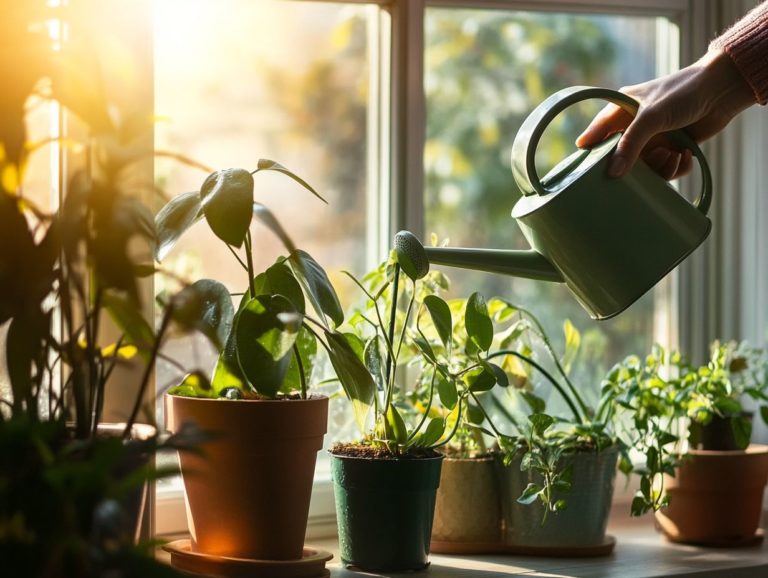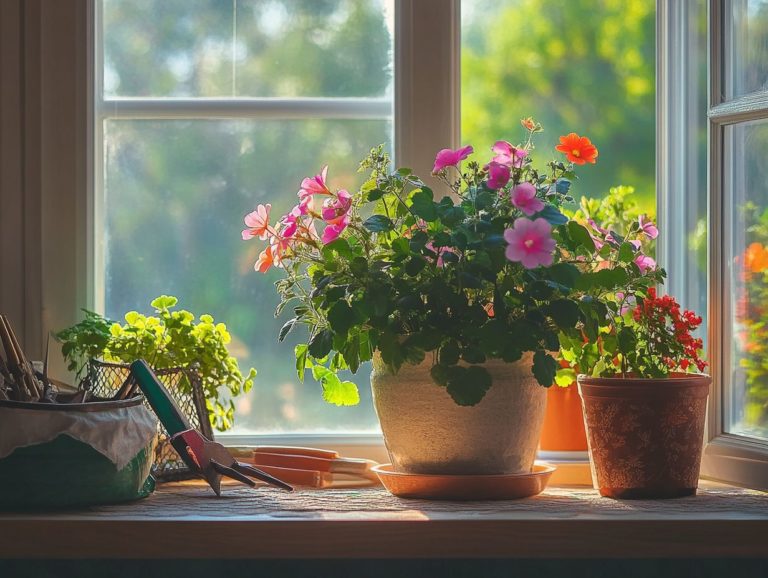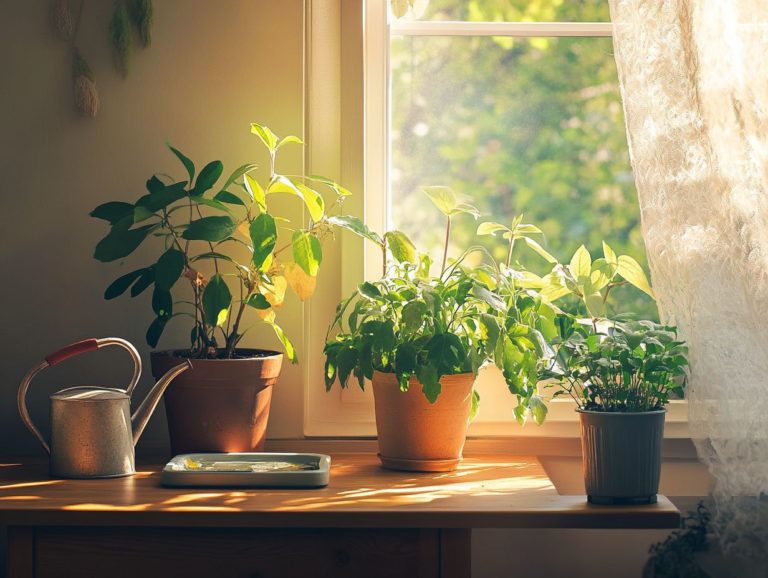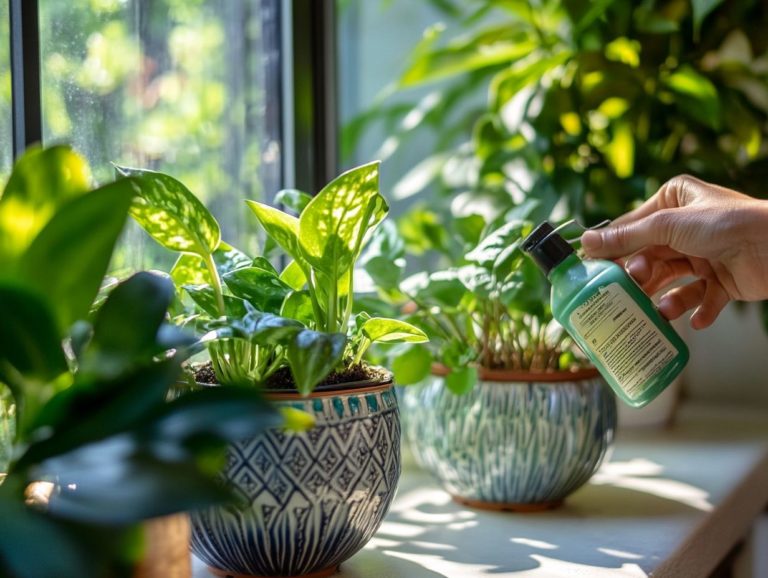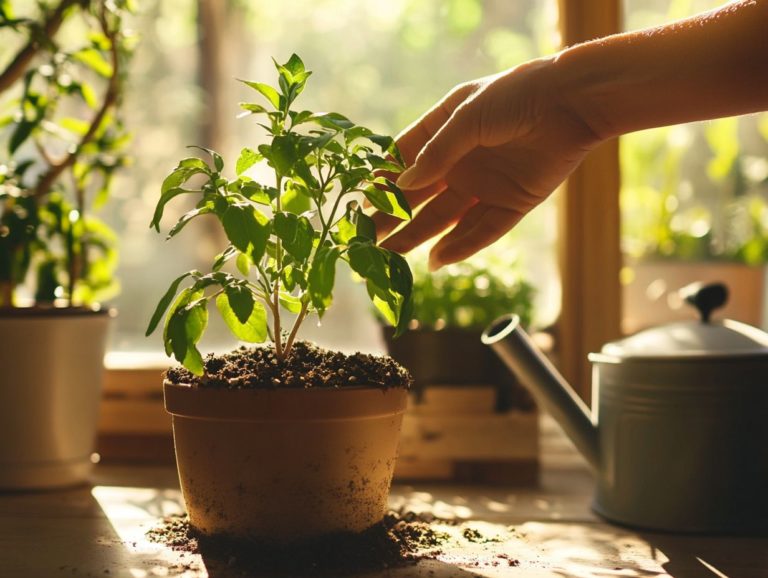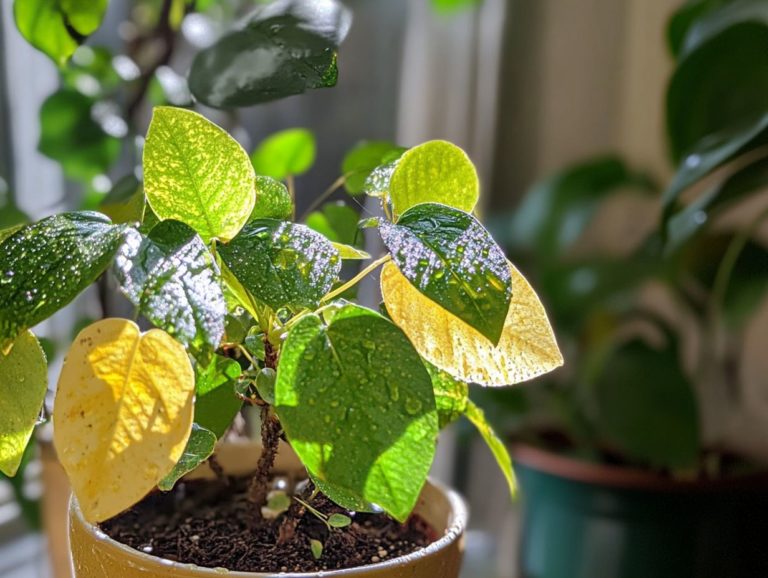How to Tell if My Indoor Plant Needs More Light?
Understanding the influence of light on indoor plants is crucial for nurturing their growth and overall health.
This article delves into the vital role that light plays, highlighting the signs that may indicate your plants are not receiving adequate exposure.
You will uncover effective strategies to improve light availability, weigh the pros and cons of natural versus artificial lighting, and discover best practices for maintaining optimal light levels.
Whether you consider yourself a seasoned plant parent or are just beginning your journey, this guide will help your plants thrive like never before!
Contents
Key Takeaways:

- Pay attention to your plant’s symptoms, such as stunted growth or yellowing leaves, as these can indicate a lack of light.
- Increase natural light by placing your plant near a window, rotating it regularly, or using reflective surfaces to redirect light.
- Consider using artificial light sources, such as LED grow lights, to supplement natural light and provide consistent and adequate light for your indoor plants.
Understanding the Importance of Light for Indoor Plants
Understanding the significance of light for your indoor plants goes beyond simple admiration; it involves a deep comprehension of how light influences their growth, health, and overall vitality.
The right lighting conditions can mean the difference between a thriving houseplant and one that languishes in low light or insufficient sunlight.
Achieving optimal lighting for your indoor plants involves a thoughtful blend of natural and artificial light.
This combination fosters photosynthesis, enhances energy absorption, and encourages strong growth patterns.
Whether you re caring for shade-loving plants or those that crave bright light, mastering the art of light exposure is essential for your success in plant care.
Role of Light in Plant Growth and Health
The role of light in your plant’s growth and health is vital; it s the primary energy source that fuels the process plants use to turn light into energy.
This transformation is crucial for their development, influencing everything from leaf color to the formation of leaf nodes and tips.
Without adequate light, you might notice your plants showing signs of stress, like leggy growth and pale leaves.
These are clear indicators that they re not absorbing enough energy.
Different wavelengths of light, particularly in the red and blue spectrum, impact plant growth uniquely.
They encourage everything from flowering to robust leaf development.
While natural sunlight offers a balanced spectrum ideal for photosynthesis, you can optimize artificial grow lights to target these specific wavelengths.
Light intensity is also key; too little can stunt growth, while too much brightness could lead to leaf burn.
Remember, temperature and humidity significantly influence how effectively your plants utilize light.
By carefully balancing these factors, you enhance not only your plants health but also their yield, ensuring that each cultivar flourishes in its environment.
Signs of Insufficient Light
Recognizing the signs of insufficient light is crucial for maintaining the health of your indoor plants.
These symptoms can present themselves in several ways, including leggy growth, small leaves, and a pale coloration.
When your plants aren t getting enough light, they ll often stretch toward the nearest source, resulting in elongated stems and sparse foliage.
This lack of light hampers the photosynthesis process, which can ultimately undermine the plant s energy levels and overall well-being.
Paying attention to these cues will ensure that your green companions thrive in their indoor environment.
Identifying Symptoms in Plants
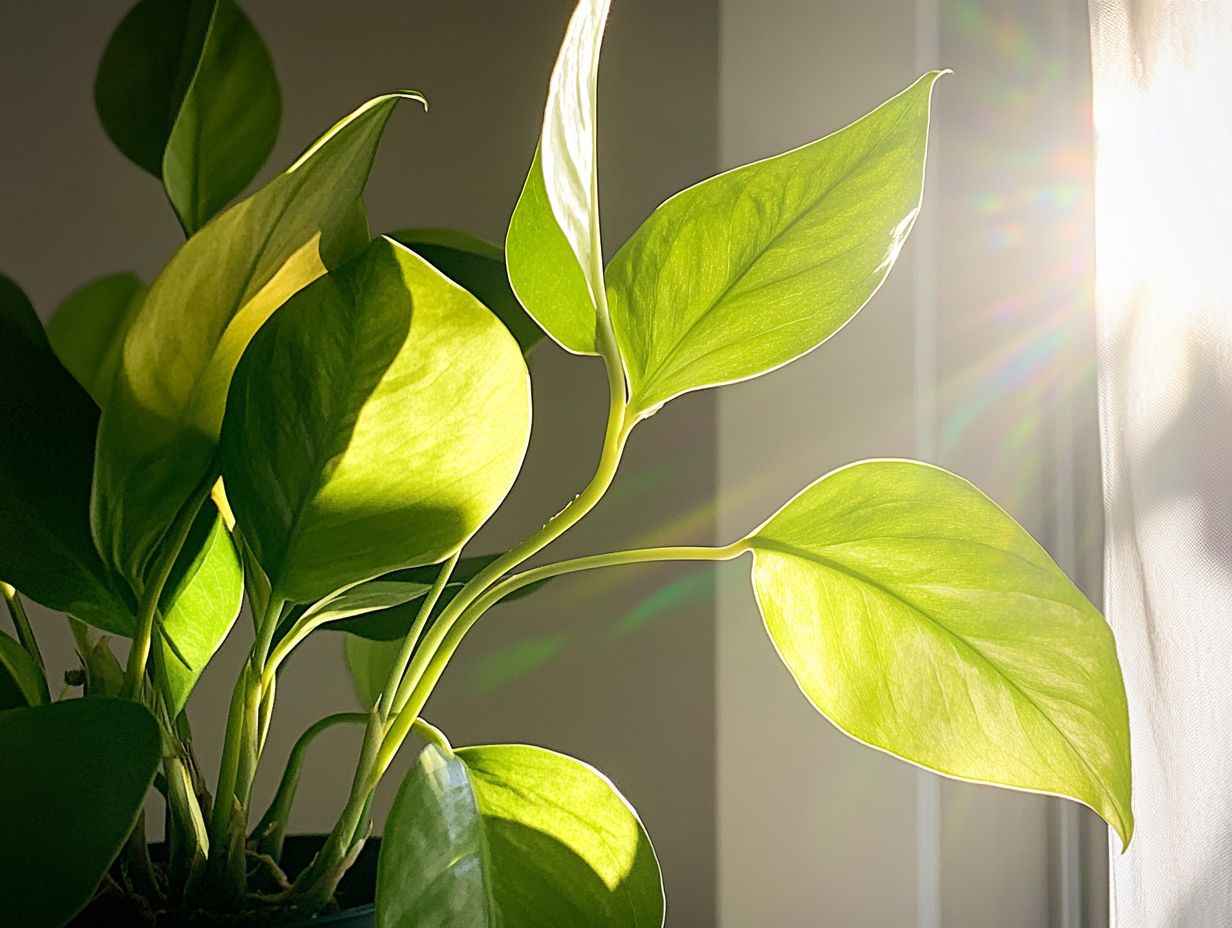
Ready to see your indoor plants thrive? Identifying symptoms is the first step! Identifying symptoms in your plants is an essential skill for any indoor gardener. This skill gives you the power to assess and respond to their light conditions with confidence.
When light is insufficient, you might notice leggy growth, where your plants stretch toward the nearest light source, or shifts in leaf color that indicate stress or poor health. For instance, you may find your houseplants sporting small leaves or developing pale foliage when they are not getting enough sunlight. Understanding indoor plant light needs can greatly enhance their vitality.
Different species respond uniquely to inadequate light. A snake plant might thrive in lower light conditions, while a vibrant monstera yearns for bright, indirect light. To assess your plants’ light conditions accurately, consider using a tool that measures light levels; this handy device will give you precise measurements of ambient light intensity. Additionally, be aware of the signs your plant needs more light, allowing you to know if adjustments are necessary.
If you spot any symptoms, don t hesitate to relocate your plants to brighter spots or supplement with grow lights. Rotating your plants can also ensure they receive even light exposure, promoting healthier growth.
How to Increase Light for Indoor Plants
To elevate the light exposure for your indoor plants, consider implementing a range of strategies that can greatly enhance their growth and health.
Move your plants closer to windows, especially those that face south, to capture maximum sunlight. You can also use artificial grow lights to create an ideal environment for plants.
Explore and fine-tune these techniques to meet your houseplants’ lighting needs, ensuring they thrive beautifully in your home.
Strategies for Improving Light Exposure
Implementing effective strategies to improve light exposure can dramatically enhance the health and vitality of your indoor plants. By utilizing techniques such as adjusting window tint to control light intensity or creating dappled sunlight effects with sheer curtains, you can tailor light conditions to meet the specific needs of your plants.
Incorporating reflective materials will help maximize available sunlight, fostering an environment conducive to healthy growth.
Additionally, it’s wise to explore more light sources like grow lights to complement natural sunlight, especially during darker months. A careful assessment of each plant’s unique light needs can lead you to better selections of treatments and bulbs. Look out for signs your indoor plant needs more light to ensure you’re providing the optimal exposure they crave.
Experimenting with various combinations of window treatments and lighting setups will help you discover what works best since different species thrive under varying conditions. Embracing a mindset of trial and error can reveal ideal strategies tailored to meet the diverse needs of your plants.
Alternative Lighting Options for Indoor Plants
Exploring alternative lighting options for your indoor plants is essential if you’re aiming to create optimal growing conditions, particularly in spaces where natural light is scarce.
With a range of artificial light sources and innovative grow lights available, understanding how to use these tools effectively can significantly impact your plants ability to photosynthesize and maintain overall health.
The choice of lighting can profoundly influence plant growth, so it’s crucial to consider options that can supplement or even replace natural light.
Comparing Natural and Artificial Light Sources
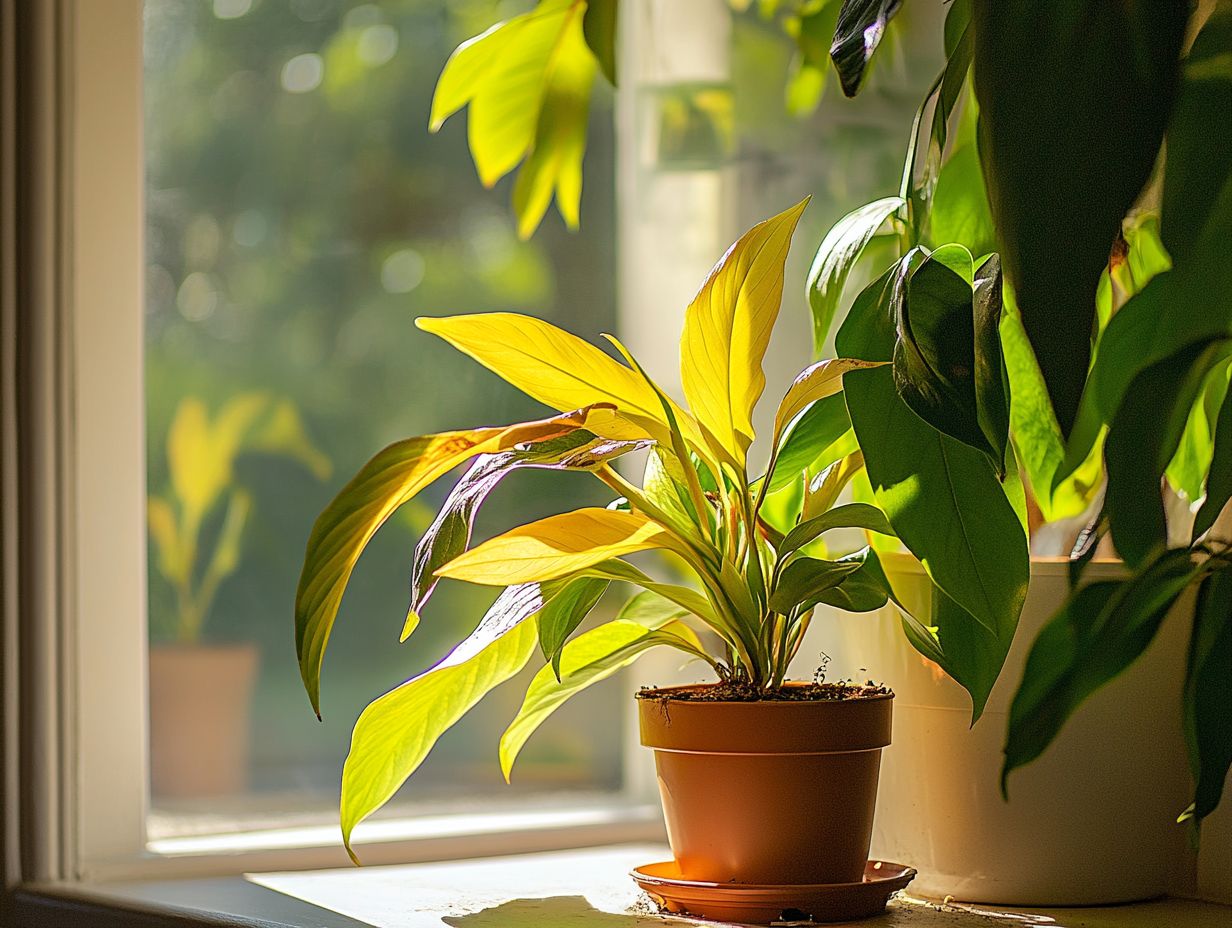
Comparing natural and artificial light sources provides valuable insights into the best options for your indoor plants, especially when considering their specific light requirements. Natural light, particularly when filtered through windows, promotes healthy growth and vibrant leaf color. In contrast, artificial light sources like grow lights emit specific wavelengths that enhance photosynthesis, the process by which plants convert light into energy, and support plants needing extra help.
Each lighting method has its own advantages and disadvantages. Natural light varies throughout the day and across seasons, making it somewhat unpredictable in terms of intensity and duration. On the flip side, artificial light offers consistency; you can adjust its intensity and duration to meet your plants’ needs.
By combining both types of lighting, you can create an optimal environment. Utilize natural light during the day and supplement with artificial sources in the evening or on cloudy days to ensure your greenery receives the full spectrum and sufficient duration of light.
Tips for Maintaining Optimal Light Levels
Keep your plants thriving by maintaining optimal light levels. This significantly impacts growth patterns, leaf health, and the overall vitality of your indoor plants.
By understanding the delicate balance between light, humidity, and temperature, you can create an environment that nurtures healthy photosynthesis and robust development.
With effective lighting management strategies in place, you can ensure your houseplants receive the ideal intensity and quality of light necessary for thriving.
Best Practices for Light Management
Best practices for light management are crucial for your plants’ health. Inadequate light exposure can lead to growth problems.
Regularly assess how your plants are positioned relative to natural light sources. This helps you find areas that need adjustment to maximize exposure. By integrating factors like water and humidity into your management strategy, you create a balanced environment that fosters growth. Additionally, it’s important to know how to tell if my indoor plant is overwatered to ensure optimal care.
Pay attention to how different plants respond to light variations. This enables you to adapt their care accordingly. Ensuring adequate humidity levels, especially around light sources, alleviates stress and promotes healthier foliage.
Ultimately, by maintaining this focus, you can cultivate a vibrant and resilient indoor plant community.
Frequently Asked Questions
How to Tell if My Indoor Plant Needs More Light?
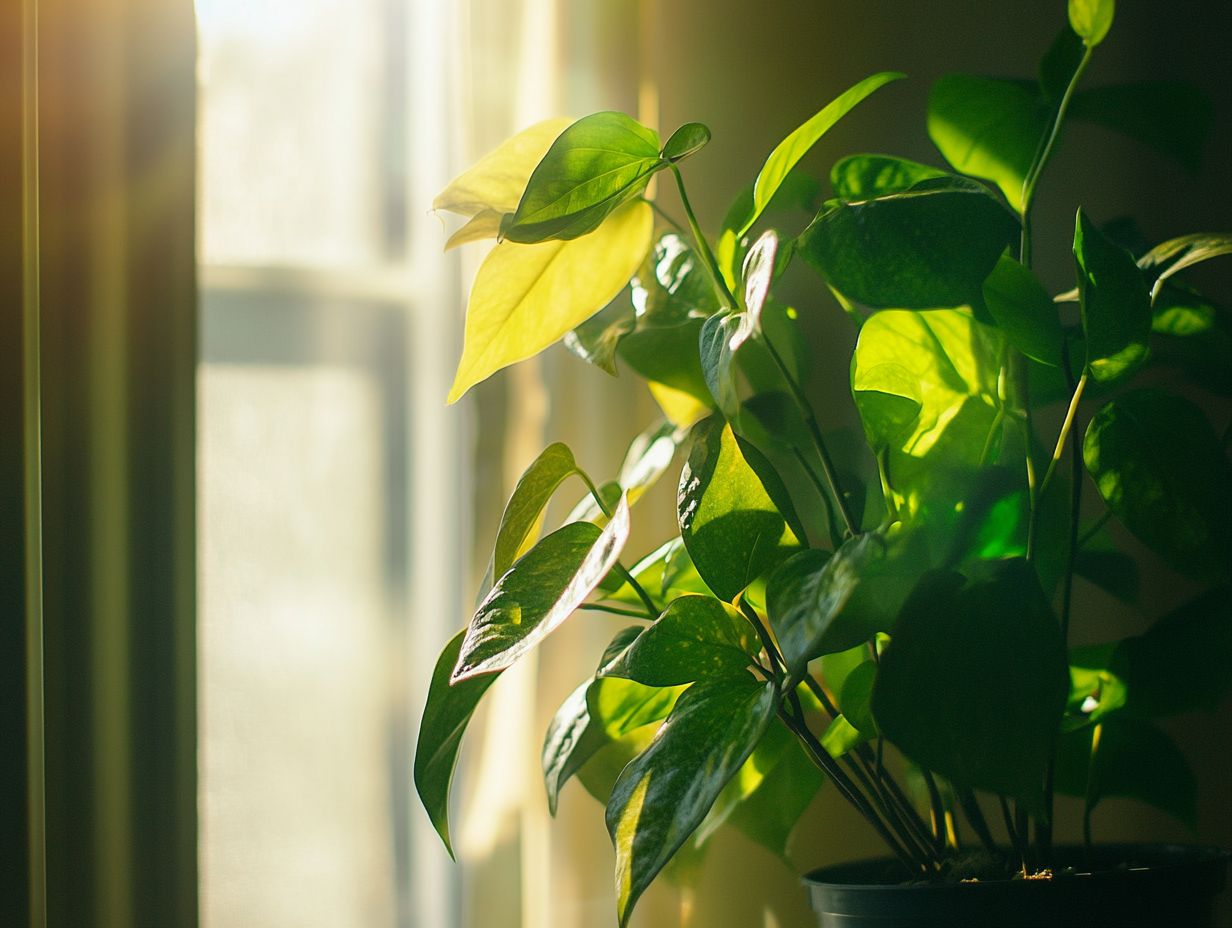
- 1. What are some signs that my indoor plant may need more light?
If your plant’s leaves turn pale or yellow, become leggy or spindly, or stop growing altogether, these are signs it may not be getting enough light. - 2. How can I determine if my indoor plant is in a spot with enough light?
Check the recommended light requirements for your specific plant. Observe the amount of natural light the spot receives throughout the day. If it receives less than the recommended amount, consider moving your plant to a brighter location. - 3. Can I use artificial light to supplement my plant’s light needs?
Yes, you can use artificial light. Look for full-spectrum LED lights that mimic natural sunlight for the best results. - 4. Is it possible to give my plant too much light?
Yes, some plants, particularly those that prefer low light, can get burnt or scorched with too much direct light. Always research your plant’s light preferences before placing it in intense sunlight.
Act now to ensure your plants get the light they need!
How to Tell if My Indoor Plant Needs More Light?
5. What can I do if my plant’s location doesn’t receive enough natural light?
If your plant isn’t getting enough light, rotate it to different spots during the day. You can also use grow lights or choose plants that like low light.
Can I save a plant that has been struggling due to lack of light?
Yes! Move it to a bright spot and trim any damaged leaves. Give it time to adjust, and if it still struggles, consider repotting or adding fertilizer.

